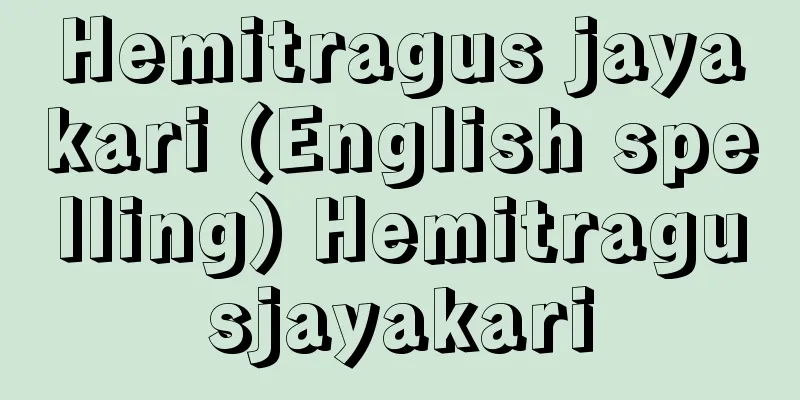Stick dance - Bouodori

|
This is a folk art form of elegance in which dancers dance with sticks. Usually, two people form a pair, but sometimes three people form a group, and often several pairs make up a group. The sticks used are generally six-foot long, and it is not uncommon for three-foot sticks to be combined, and the dancers dance while striking each other with them. The sticks used in stick dancing are essentially magical tools, just like the sacred walking sticks that are the residence of gods, and are swung or struck together to appease or exorcise evil spirits, but in connection with the martial art of stick fighting, they also serve as a means of training and self-defense for young villagers. Sticks have come to be of various shapes and forms, including naginata, spears, swords, sickles, and hanabo, and are found in a variety of forms from the Tohoku region to Okinawa. For example, there is the "Nanatsumono" from Taro, Miyako City, Iwate Prefecture, the sticks of the "Haramamuro Shishimai" from Konosu City, Saitama Prefecture, the "Bo-no-te" from Aichi Prefecture, the "Tachi-odori (Hanatori-odori)" from Kochi Prefecture, the "Otsuka Stick Dance" from Hitoyoshi City, Kumamoto Prefecture, and the "Fuenushima" from Okinawa Prefecture. In terms of size and strong artistic flavor, the southern Kyushu dances are typical, and are magnificent, accompanied by song and with pairs of four or even six people. [Masahiro Nishikado] [Reference] |Source: Shogakukan Encyclopedia Nipponica About Encyclopedia Nipponica Information | Legend |
|
棒を持って踊る風流(ふりゅう)系の民俗芸能。普通には2人が一対、ときには3人が一組になり、数対で一組をつくる場合が多い。棒は六尺棒が一般的で、三尺棒が組み合わされることも珍しくないが、これを打組みに打ち合いながら踊る。棒踊の棒は基本的に神霊の依(よ)る聖なる用具の杖(つえ)と同じ呪具(じゅぐ)としての性格をもち、これを振ったり打ち合わせたりして悪霊を鎮めたり祓(はら)ったりするが、また武術の棒術との関連において、村落の青年の鍛錬と自衛の手段の意義を兼ね備えている。棒は薙刀(なぎなた)、槍(やり)、刀、鎌(かま)、花棒など種々のバラエティーをもつようになり、東北地方から沖縄までさまざまな姿形で散在している。たとえば、岩手県宮古(みやこ)市田老(たろう)の「七(なな)つ物(もん)」、埼玉県鴻巣(こうのす)市の「原馬室獅子舞(はらまむろししまい)」の棒、愛知県の「棒の手」、高知県の「太刀(たち)踊(花取(はなとり)踊)」、熊本県人吉(ひとよし)市の「大塚の棒踊」、沖縄県の「南の島(ふえーぬしま)」などである。規模の大きさ、芸能色の濃さでは南九州のものが典型的で、歌を伴い、4人対、6人対のものまでもあり、華麗である。 [西角井正大] [参照項目] |出典 小学館 日本大百科全書(ニッポニカ)日本大百科全書(ニッポニカ)について 情報 | 凡例 |
>>: Antifouling treatment - Boukakou (English name) antisoiling
Recommend
pasteurization
...The process of sterilizing food by holding it ...
Amanita virosa (English spelling) Amanitavirosa
…[Rokuya Imaseki]. . … *Some of the terminology t...
Hipposideros armiger (English spelling) Hipposideros armiger
…[Yoshiyuki Mizuko]. . . *Some of the terminology...
streak camera
...Using the Schlieren technique, shock waves in ...
Kirin bamboo
…Oroshimachiku (also called Kirinchiku) cv. Disti...
Chikusichloa mutica (English spelling) Chikusichloamutica
…[Tetsuo Koyama]. … *Some of the terminology that...
Rosa hirtula (English spelling) Rosa hirtula
…[Yamanaka Second Son] [Nitta Aya]. … *Some of th...
Dry distillation
This is the process of heating and decomposing so...
Gallicolumba
… Most species live mainly in trees. However, the...
Else Lasker‐Schüler
1869‐1945 German female poet. Born into a wealthy ...
Levy, R.
...She was the daughter of a wealthy Parisian bou...
Zeno (of Cyprus) (English spelling)
335 - 263 Greek philosopher from Kition, Cyprus. F...
Takagi Ichinosuke - Takagi Ichinosuke
A scholar of Japanese literature, he was born in ...
Magic - Magic
It is a technique for performing miraculous acts ...
Pseudowollastonite
...There are several other polymorphic structures...









